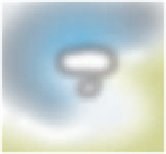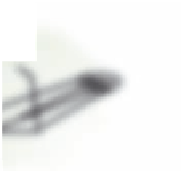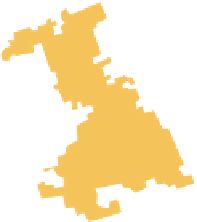Geoscience Reference
In-Depth Information
Direction of rotation
Raindrops
moving away
from radar unit
Central
updraft
Raindrops
moving toward
radar unit
Rain hook
NEXRAD radar
transmitter/receiver
Tornado
Hook echo
(a)
(b)
(c)
Figure 8.20 Doppler radar.
(a) Doppler radar “sees” the rotation of a tornado because of the Doppler Effect, which, in this case,
reflects the variation in returning wave frequency from either side of the system. (b) The rotation of a tornado is displayed as a hook
echo on the computer screen. (c) A hook echo is indicative of aggressive cloud rotation, which usually means that a tornado is present.
In contrast to conventional radar, which shows the intensity of
precipitation in any given storm, Doppler radar can detect
both
rainfall patterns and the actual rotation of a tornado. It does
so by making use of the Doppler Effect, described first by the
19th-century physicist Christian Doppler, which states that
the frequency of energy waves generated by a moving source
changes relative to an observer.
A classic example of this effect is the sound a train
makes as it approaches you. Have you ever noticed what hap-
pens? The pitch of the train's whistle rises with the approach
of the train and then lowers after it passes. Using this effect,
Doppler radar can determine that raindrops on one side of a
tornado are moving toward the radar detector, while those on
the other side are rotating away because of the shift in en-
ergy frequency that occurs relative to each side of the twister
(Figure 8.20a). This rotation is seen by the meteorologist in the
weather laboratory as a distinct
hook echo
on the computer
screen (Figure 8.20b, c). If such a feature is identified, a tornado
warning is quickly issued for the area in the path of the storm
and people usually have sufficient time to seek shelter before
the storm strikes.
Hook echo
The diagnostic feature in Doppler radar indicat-
ing that strong rotation is occurring within a thunderstorm and
that tornado development is thus possible.
Tornadoes
Tornadoes are fascinating natural phenomena that are often
caught on film by storm chasers and regular citizens alike. To
learn more about tornadoes, view the animation
Tornadoes
.
The first part of this module demonstrates how tornadoes form
and shows real storm video. The last part of the module is an
interactive exercise, involving the Enhanced Fujita scale, which
allows you to determine the strength of a tornado based on the
damage it caused. After you interact with this module, be sure
to answer the questions at the end to test your understanding of
this concept.



